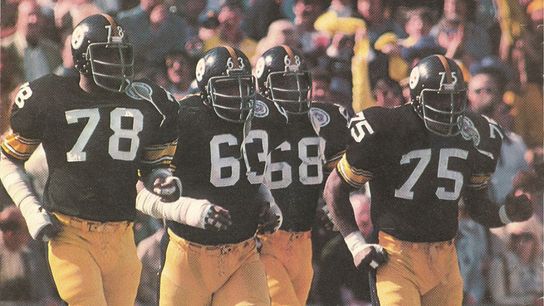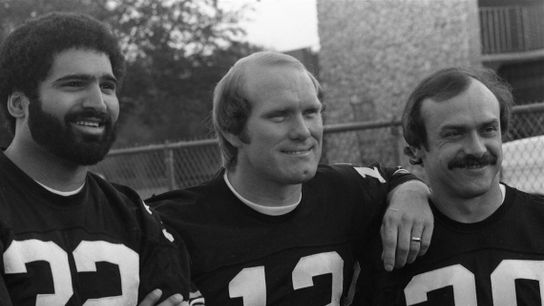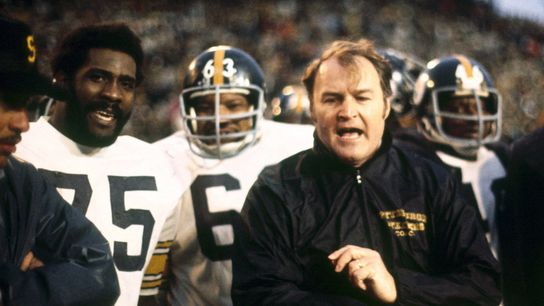Few eras in sports history are as dominant as the Pittsburgh Steelers dynasty of the 1970s. Led by Head Coach Chuck Noll, the Steelers transformed from an overlooked franchise into a powerhouse that defined professional football. With stars like Terry Bradshaw, Franco Harris, “Mean” Joe Greene, and the famous Steel Curtain defense, the team captured four Super Bowls in just six years. As with other legendary stories and resources like https://romania-casinobonusesfinder.com/type/instant-play-casinos-no-deposit-bonus/, this article dives deep into the legacy of the Steelers dynasty, explains why their success still resonates today, and helps fans appreciate the lessons of leadership, teamwork, and resilience that Noll instilled in Pittsburgh.

Steelers.com
Steelers' Steel Curtain: Dwight White, Ernie Holmes, L.C. Greenwood and Joe Greene.
The Transformation Under Chuck Noll
When Chuck Noll arrived in 1969, the Steelers were far from champions. In fact, the franchise had never won a playoff game. But Noll brought discipline, intelligence, and a long-term vision. By the early 1970s, his philosophy began producing results.
Noll built the roster with iconic draft picks: “Mean” Joe Greene (1969), Terry Bradshaw (1970), Franco Harris (1972), and Lynn Swann (1974). These additions turned Pittsburgh into an unstoppable force. The once struggling team became a model of success, paving the way for the Steel Curtain defense to dominate opponents and inspire fans worldwide.
The Steel Curtain Defense
The heart of the 1970s Steelers dynasty was the Steel Curtain — a defense so legendary it became part of American sports culture. Anchored by Joe Greene, L.C. Greenwood, Ernie Holmes, and Dwight White, this defensive front made life miserable for rival quarterbacks.
In 1976, the Steel Curtain defense was at its peak: the Steelers allowed fewer than 10 points per game over a nine-week stretch. This dominance set the tone for championships and gave Pittsburgh its identity: tough, relentless, and proud of its blue-collar roots.
Key Players Who Defined the Dynasty
- Terry Bradshaw – Quarterback and two-time Super Bowl MVP.
- Franco Harris – Running back known for the Immaculate Reception.
- Lynn Swann & John Stallworth – Wide receivers who made clutch catches.
- “Mean” Joe Greene – The emotional leader of the defense.
- Jack Lambert – Fearsome linebacker, symbol of Steelers toughness.

Morris Berman / Pittsburgh Post-Gazette
Steelers' Franco Harris (32), Terry Bradshaw (#12), and Rocky Bleier (#20) in the 1970's.
These stars became legends, and their contributions cemented the Pittsburgh Steelers dynasty in history.
Lessons for Modern Fans
The Pittsburgh Steelers dynasty under Noll is more than history — it’s a playbook for success:
- Build with patience and smart drafting.
- Create a culture of toughness and accountability.
- Blend stars with role players to achieve balance.
Even today, the Steelers’ six Super Bowl championships remind us that long-term vision beats short-term hype.
Sales Call to Action
Are you a Steelers fan wanting to relive the glory days or track the modern team’s progress? Independent sports websites bring you honest Pittsburgh Steelers reviews, historical breakdowns, and community discussions.
Join the Steeler Nation Forum today to access exclusive content on the dynasty
Discover black and gold history, player profiles, and stories from fans who lived through the Steel Curtain era.

Steelers.com
Final Motivation: Legacy Beyond Football
The 1970s Steelers dynasty wasn’t just about football. It reflected Pittsburgh’s resilience, toughness, and pride. The city was struggling with the decline of steel mills, yet on Sundays, fans united around their team. The Terrible Towel became a worldwide symbol of Steeler Nation.
Chuck Noll once said: “Good things come to those who work hard.” His message resonates beyond the field. For modern fans, the Steelers’ dynasty proves that leadership, strategy, and perseverance can overcome any challenge.
The legendary dynasty of the 1970s Pittsburgh Steelers remains unmatched, not just in titles, but in cultural impact.


